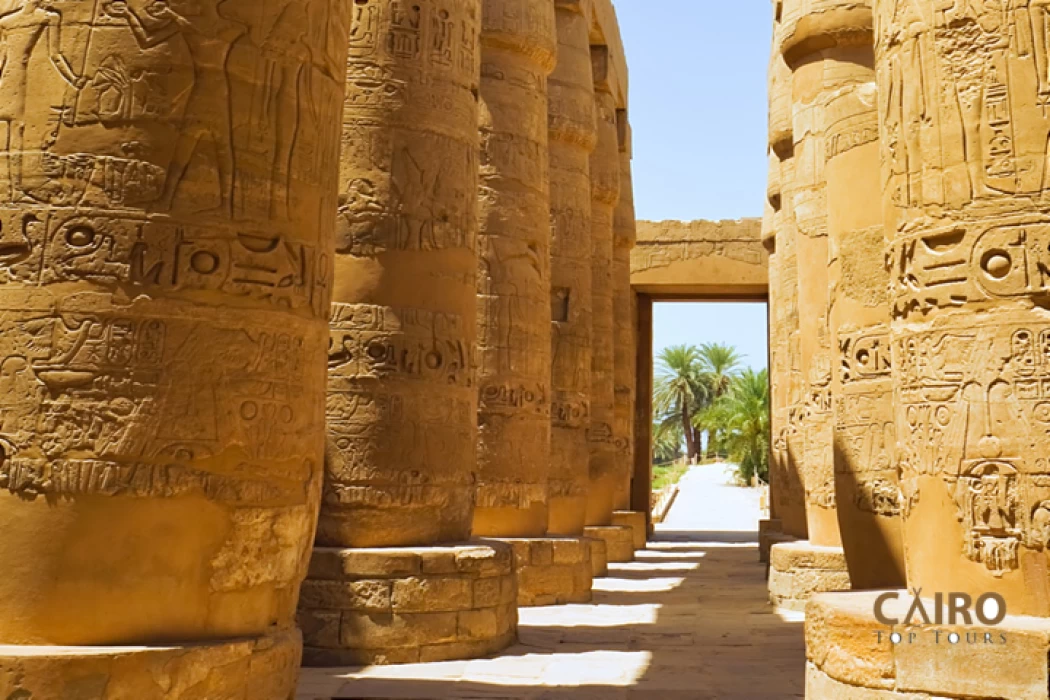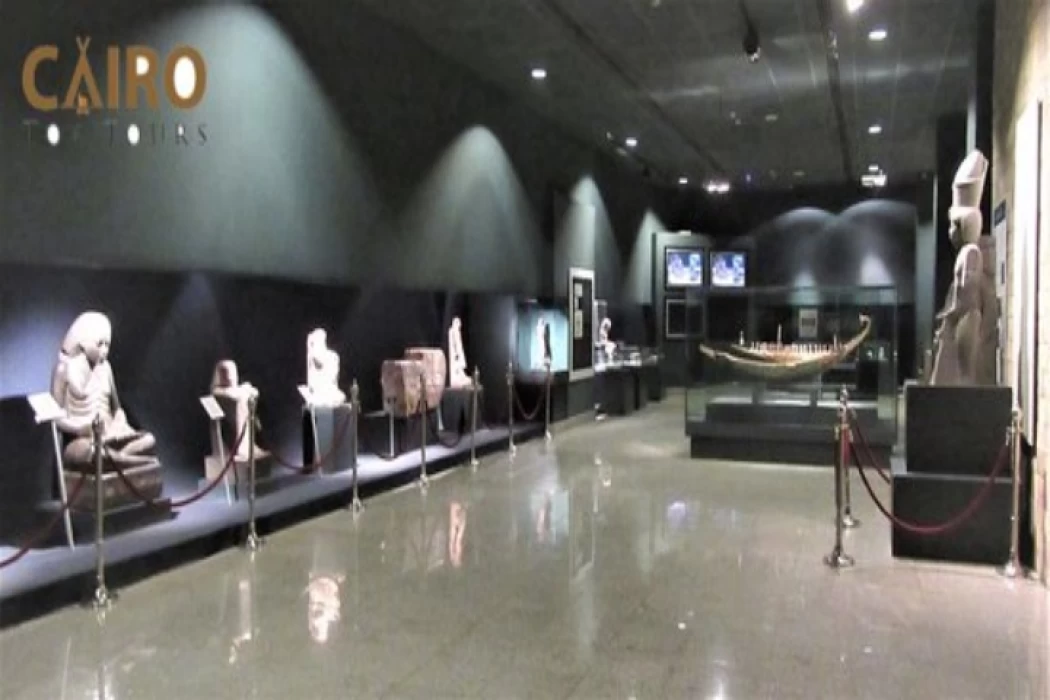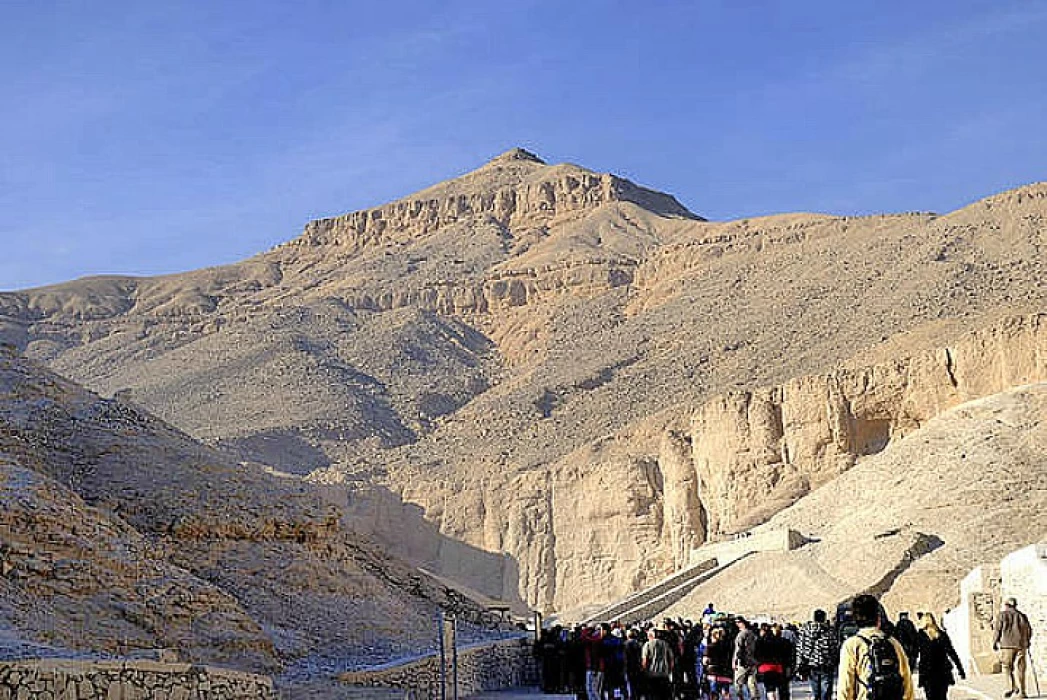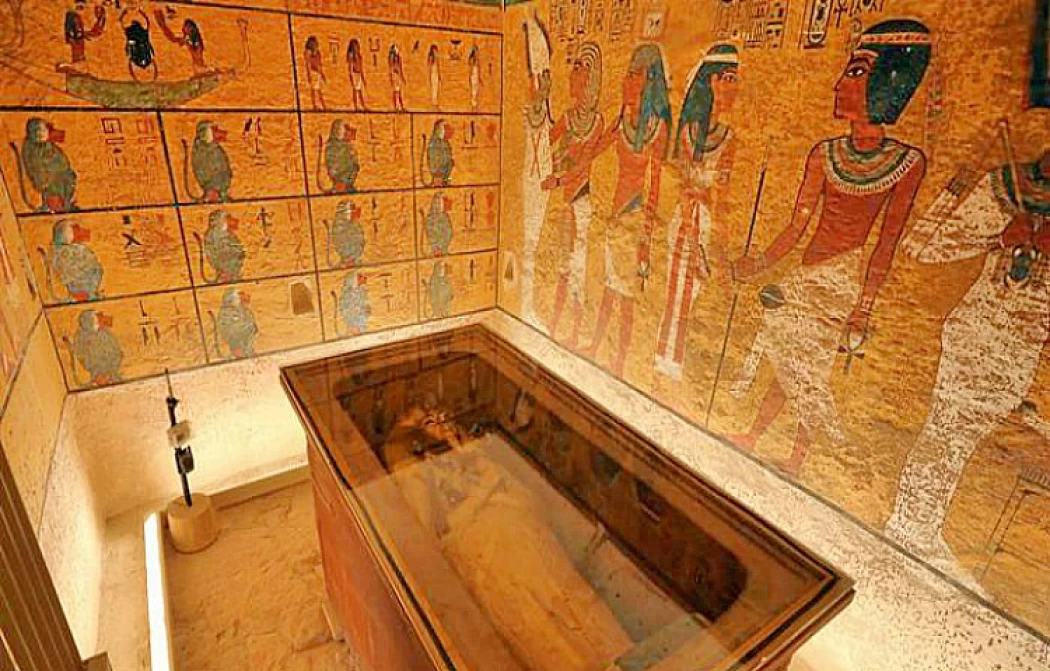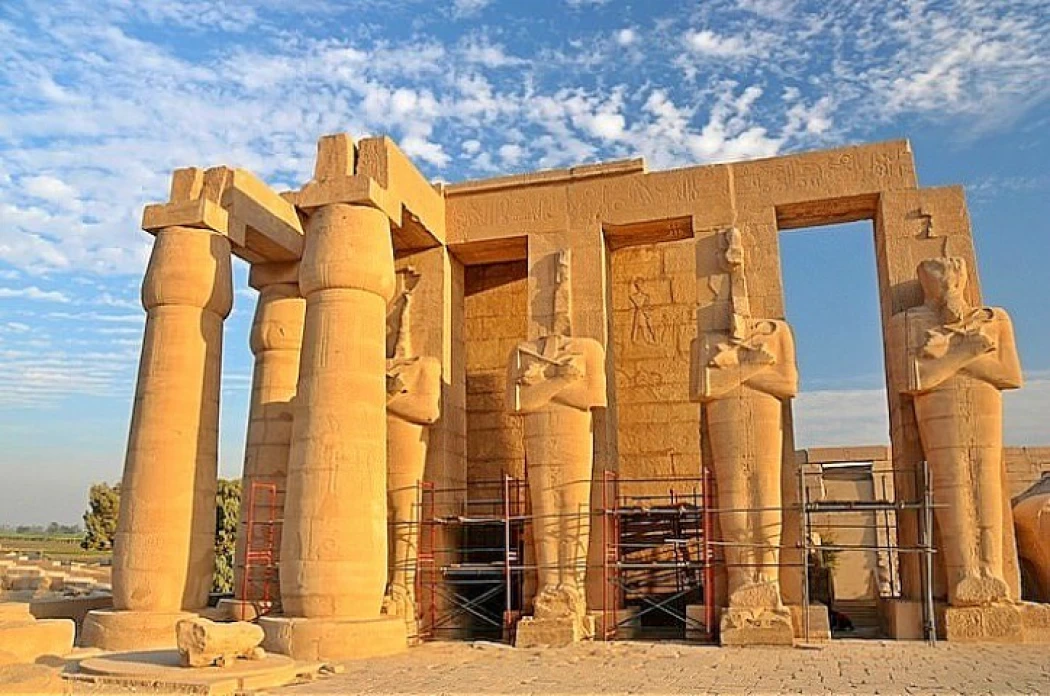Admin
Travel to Egypt is synonymous with a visit to the Valley of the Kings, where more than 63 royal tombs rest, among them the most prominent pharaohs of the New Empire - 18th, 19th and 20th Dynasties.
Admin
Karnak Temple | The Largest Egyptian Temple
The Karnak Temple is the largest and one of the most important temples in Egypt, and one of the largest pharaonic kingdoms in Egypt, as it provides a rich record of the Egyptian civilization from the Middle Kingdom to the Ptolemaic period, spanning about 2000 years.
Admin
The Mortuary Temple Of Hatshepsut At Deir El-Bahri
The Hatshepsut Temple at Deir El-Bahri is one of Egypt's most characteristic temples and the most distinguishing temple on earth. The Temple of Hatshepsut was commissioned by a lady who governed Egypt with a policy. At King Hatshesut's daughter, Tutmosis I, the temple was completed. It was made of calestone to honour the accomplishments of the great Queen Hatshepsut (18th Dynasty).
Admin
Colossi of Memnon
The Colossi of Memnon belongs to King Amenhotep III, who supervised its construction by the famous architect Amenhotep bin Hapu, and in the past, there was an ancient funerary temple for King Amenhotep III, of it nothing remains except the two statues, which are about 21.90 meters high, and are considered part of an agenda. Tourist attractions for foreigners who enjoy Luxor and its monuments.
Admin
Temple of Dendera
The temple of Dendera is located in the southeast of the city of Dendera, It has been dedicated to the goddess of love, happiness, and beauty "Hathor”. constructed on the Greco-Roman architectural style. The temple was formerly known as the House of Hathor and is considered one of the largest religious temples.
Admin
Temple of Madinet Habu
Built as a burial temple, the Medinet Habu temple in Luxor was intended to house the worship of several Egyptian deities in addition to the pharaohs Ramses III and II. As one of the most significant and powerful pharaohs of the XX dynasty, King Ramses III personally gave the order to have it constructed.
Admin
Luxor museum
Though relatively tiny in comparison to other Egyptian museums, the Luxor Museum offers a great representation of ancient Thebes' art and history. Ancient Egyptian military artifacts, jewelry, sculptures, and mummies are among the exhibits kept in this museum. The reconstructed wall of the temple of Kernak from Ahkenaton's time, which displays his unique creative style, is among the collection's most priceless items.
Admin
Luxor International Airport
During your Egypt Travel Packages, Egypt Day Tours, or even while on a Nile Tour in Egypt, you will make advantage of the Luxor International Airport amenities upon arrival or departure.
Admin
Gizert El Moaz | The Banana Island
Banana Island is like magic that attracts Egyptians and tourists from around the world. Banana Island is part of Bauirat village in the city of Luxor on the west bank of the Nile River. The Island has been made by nature and with touches of the Luxor's inhabitants, It represents a safe place for inner peace, tranquility, and the magic to release your thoughts and chill out. You can organize your tour of Banana Island by contacting our professional team easily.
Admin
Deir El-Medina in Luxor
Deir al-Madina, located in Luxor's western mainland, is very significant because it contains worker tombs that reveal the social standing of the individuals interred there. These workers oversaw the kings' and queens' tombs' excavation and engraving. The region was given the name "Deir al-Madina" due to the presence of a medieval monastery.
Admin
The Ramesseum in Luxor
Among the funeral temples constructed in ancient Egypt for the deceased is the Ramesseum Temple. constructed for the greatest monarch to have temples erected, King Ramses II. Massive statues of King Ramses II can be found in the temple, along with inscriptions that shed light on the nature of life at the time and the events of the well-known Battle of Kadesh, which saw King Ramses II defeat the Hittites. The inscriptions also detail the events leading up to the battle and his strategy for winning.
Admin
Valley of the Queens
The wives and princes of various nobility buried the pharaoh in the Queen's valley, which was located on the west bank of Luxor, close to the Kings' valley.
Admin
Valley of the Nobles
A neighborhood in the Valley of the Nobles inhabited by nobility. After the Kings Valley and Queens Valley, where the nobility follows the kings and priests, this cemetery is the best.
Admin
Tutankhamun's Tomb: A Glimpse into Ancient Egypt
Tutankhamun's Tomb, discovered in 1922 by Howard Carter, is a significant archaeological find in history. Located in the Valley of the Kings, it contains a wealth of treasures, including the famous gold mask of the young pharaoh. Tutankhamun, who ruled from 1332 to 1323 BCE, was known for his opulent burial goods and role in restoring traditional polytheistic beliefs.
Admin
Abu El-Haggag Mosque in Luxor
Abu El-Haggag Mosque, a 19th-century mosque in Luxor, Egypt, is named after Sufi saint Abu El-Haggag. Built on the ruins of the Temple of Karnak, it features traditional Islamic architecture, a minaret, and intricate decorations. It hosts an annual festival in honor of the saint, drawing pilgrims and tourists, reflecting Luxor's rich cultural history.
Admin
Ramesseum Temple | Luxor Attractions
The "Ramesseum" temple, named after King Ramses II, is located near Luxor on the eastern side of the Nile in Upper Egypt's Theban cemeteries. It was only during Jean-François Champollion's 1829 visit to the ruins that the names and titles of Ramesses were identified in hieroglyphic script on the walls.
Admin
Sofitel Winter Palace Luxor | Egypt
Luxor, an ancient archaeological city, is known for its timeless monuments and popularity among kings, presidents, and celebrities. It is the capital of civilization and history, owning one-third of the world's antiquities. Luxor's monuments are considered the capital of ancient Egypt, Thebes, and the city of the sun. The Winter Palace Hotel in Luxor, built in 1886 and opened in 1903, is a renowned landmark that has been a source of historical narratives. Designed by English orientalist Thomas Cook, the hotel is situated on the east bank of the Nile, just 100 meters from the Luxor Temple, and is now preserved to showcase the past's fragrance.
Admin
Deir el-Bahari cache
The mummy cache at Deir el-Bahari was firstly discovered in 1875, and in relation to that, during the next couple of years, excavations were performed by Gaston Maspero-the head of the Egyptian Antiquities Service-and the mummies, which were placed in the Egyptian Museum in Cairo.
Admin
Tomb of Tutankhamun
The Valley of the Kings, located on the Nile River's west bank near Thebes, served as a cemetery for pharaohs during the New Kingdom of Ancient Egyptians from 1539 to 1075 BC. The 20,000 square meter rocky valley houses 27 royal tombs from the 18th, 19th, and 20th Egyptian dynasties, which have been discovered to this day. Pharaoh Tutankhamun, also known as King Tut, was the last Eighteenth Dynasty Pharaoh from 1334 to 1325 B.C. He is famous for his intact tomb and treasures, unmarked grave, and premature death due to broken bones. His minister married his widow after his death.
Admin
Tomb of Queen Nefertari
There were also the great queens of the New Kingdom (1550-1090 BC) Nefertiti, the wife of Akhenaten (1371-1355 BC), and Nefertari, one of the celebrated eight wives of Ramses II (c. 1279-c. 1213 BC). While Nefertiti is more popular for the exquisite portrait bust of her that is located in Berlin, Nefertari is famous mostly for her large burial site situated in the Valley of the Queens.
Admin
The Reviving of the Grand Avenue of Sphinxes (Rams Road)
The Road of the Rams was a significant route for pharaohs' processions and was home to various festivals, including the "Opt" feast, coronation, and national festivals. A large stone dam protected the road from Luxor, the political and religious capital of the New Kingdom, until Roman times. Over 72 years ago, the Pharaohs' historic road was discovered, and excavation continued after a pause in 2011. In 2017, the road returned as part of the UNESCO World Heritage Site of Thebes, transforming Luxor into an open museum.
Admin
Tomb of Ramosa in Luxor | Tombs of The Nobles Luxor
The pharaonic royalty is the exclusive focus of nearly all we see of ancient Egypt today. Because of their enormous scale and the fact that they are actually cut out of stone, the gigantic architectural projects that the Egyptian pharaoh commissioned throughout the civilization's history have fared far better over time than other ancient relics.

